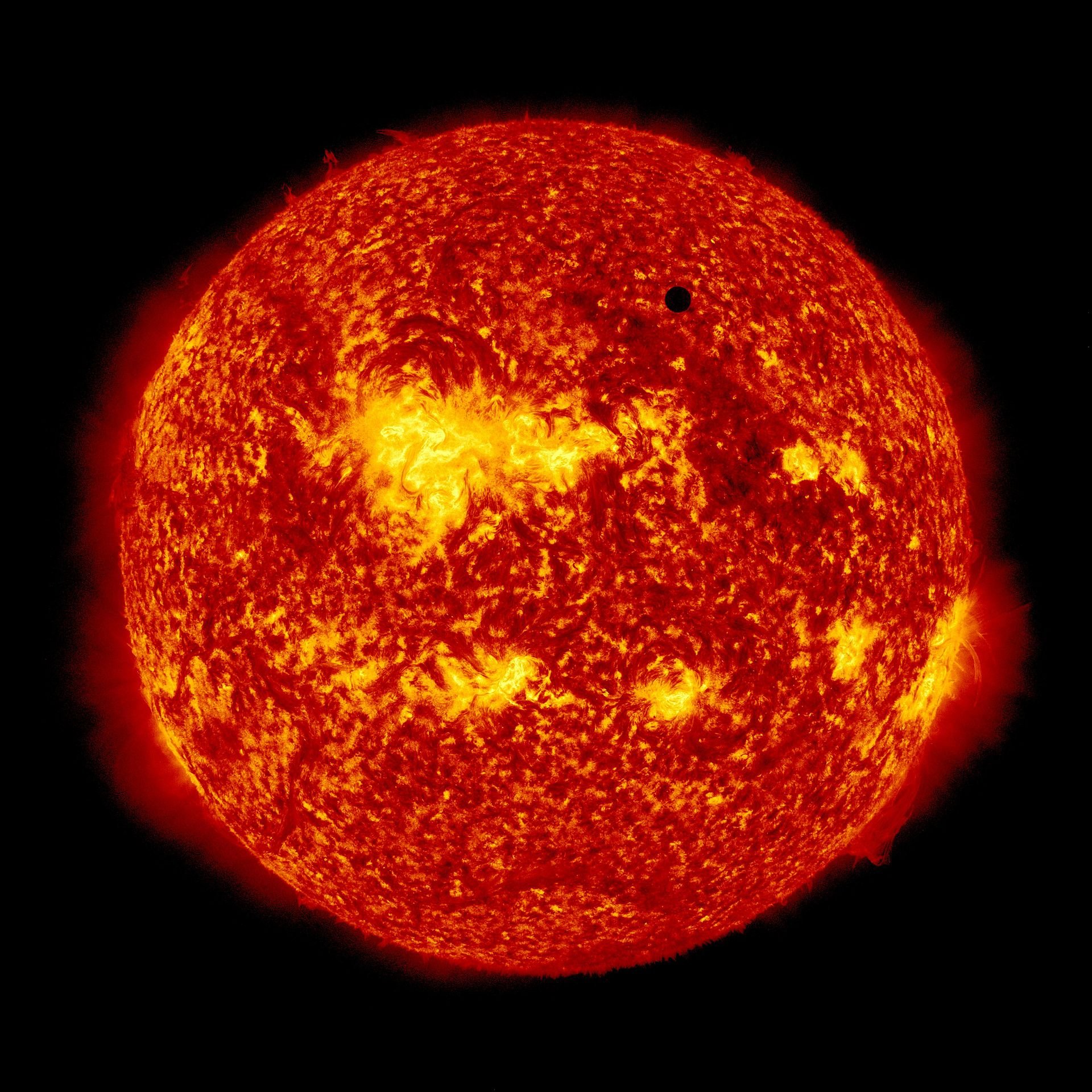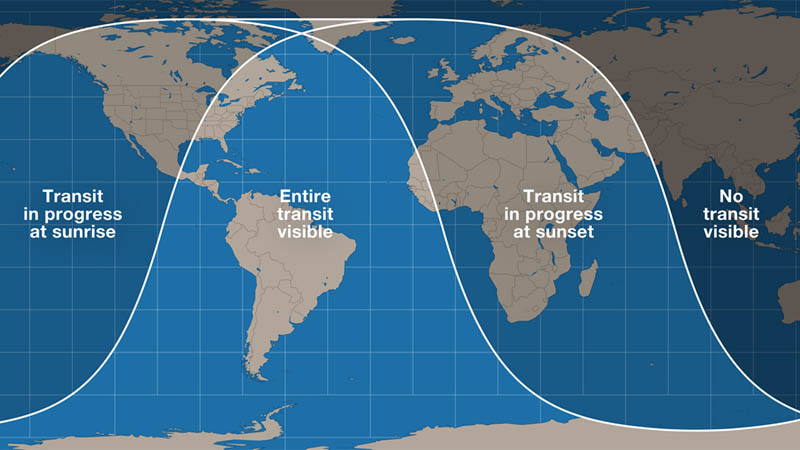
On Monday, November 11, 2019, stargazers will be treated to an unusual sight: our solar system's smallest planet, Mercury, passing between the Earth and the Sun. The rare event, called a transit, will be the fourth of just 14 transits of Mercury that will occur during the 21st century. The last one took place on May 8, 2016, and the next will not occur until November 13, 2032. However, it will not be visible from North America, which means the continent's residents will have to wait until May 7, 2049, to observe the celestial delight again.

Though Mercury speeds around the Sun every 88 days, it has a highly eccentric orbit that takes it as close as 29 million miles (47 million km) and as far away as 43 million miles (70 million km) from the star. The planet's orbit is also inclined 7 degrees to the plane of the Earth's orbit. The combination of these factors means that the Earth, the sun, and Mercury do not align very often, making transits rare.

The planet's 5.5-hour journey in front of the Sun will begin at 4:35 a.m. Pacific Time. However, even those on the US West Coast will have to wait for the sun to rise to view it. The transit will end after sunset for those living in Europe, Africa, western Asia, and the Middle East. Though visible from most parts of the Earth, only residents of eastern North America, Central and South America, southern Greenland, and part of West Africa will be able to view the transit from start to finish.
Mercury, which will be at its closest point to the Sun and farthest point from the Earth, will appear as a black dot on the star's surface. Measuring just about 0.5% of the Sun's diameter, the planet will only be visible through powerful telescopes with a minimum magnification of 50x. Viewers are also required to use special solar filters to protect their eyes from the Sun's harmful ultraviolet rays. Alternatively, experts recommend using the telescope to project the star's image onto a white card or screen. "Because Mercury is so small from our perspective on Earth, you'll need binoculars or a telescope with a sun filter to see it," says NASA.
Resources: Space.com, skyandtelescope.com,cnet.com
